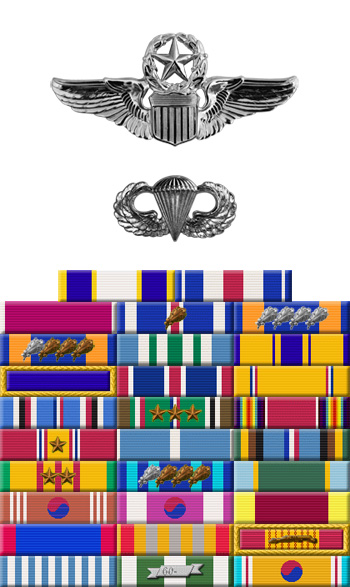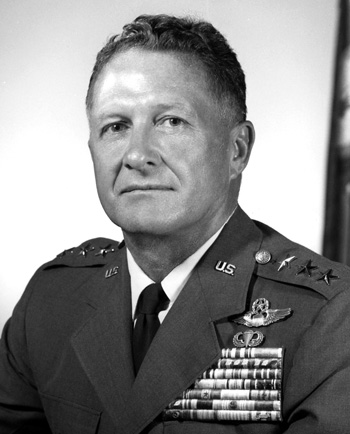
|
Gordon M. Graham |
 |
|||
| Rank, Service | ||||
Lieutenant General O-9, U.S. Air Force |
||||
| Veteran of: | ||||
|
||||
| Tribute: | ||||
Gordon Graham was born on February 16, 1918, in Ouray, Colorado. He enlisted in the Aviation Cadet Program of the U.S. Army Air Corps on December 31, 1940, and was commissioned a 2Lt and awarded his pilot wings on August 16, 1941. After serving as an instructor pilot in the States, Graham was assigned to the 355th Fighter Group in Europe in August 1944. He was made commander of the 354th Fighter Squadron in October 1944, commander of the 374th Fighter Squadron in June 1945, and commander of the 361st Fighter Group in August 1945. During World War II, Graham was credited with the destruction of 7 enemy aircraft in aerial combat plus 9.5 more while strafing airfields during 73 combat missions in P-51 Mustang fighters. He served as assistant chief of staff for operations of 8th Fighter Command in England from October 1945 to February 1946. Graham left active duty for 4 months in 1946 and then returned to active duty in September 1946 as deputy assistant for operations of Tenth Air Force at Brooks Field, Texas. After completing his masters degree in September 1949, Graham served with the Director of Intelligence at Headquarters USAF from 1949 to July 1953, and then at Headquarters Far East Air Forces in Japan from July 1953 to January 1955. His next assignment was as Deputy Commander of the 31st Strategic Fighter Wing at Turner AFB, Georgia, from March to October 1955, and then as Commander of the 31st SFW from October 1955 to June 1960. From June 1960 to July 1962, Gen Graham served at Headquarters USAF in the Pentagon. He became Commander of the 4th Tactical Fighter Wing at Seymour Johnson AFB, North Carolina, in July 1962, serving until October 1963 when he became Vice Commander of 19th Air Force, also at Seymour Johnson. Gen Graham was named Assistant Deputy for Operations of Tactical Air Command in October 1964 and Deputy for Operations of TAC in August 1965. Graham served as Vice Commander of 7th Air Force at Tan Son Nhut Air Base in the Republic of Vietnam from August 1966 to August 1967, during which time he flew 146 combat missions in Southeast Asia. Gen Graham was next assigned as Commander of 9th Air Force at Shaw AFB, South Carolina, where he served from August 1967 to August 1968. From August 1968 to February 1970, he served as Vice Commander of Tactical Air Command, and from February 1970 to November 1972 he was Commander of U.S. Forces Japan and Commander of 5th Air Force at Fuchu Air Station, Japan. Gen Graham's final assignment was as commander of the Sixth Allied Tactical Air Force at Izmir, Turkey, from November 1972 until his retirement from the Air Force on July 1, 1973. Gordon Graham died on March 22, 2008. |
||||
|
||||

